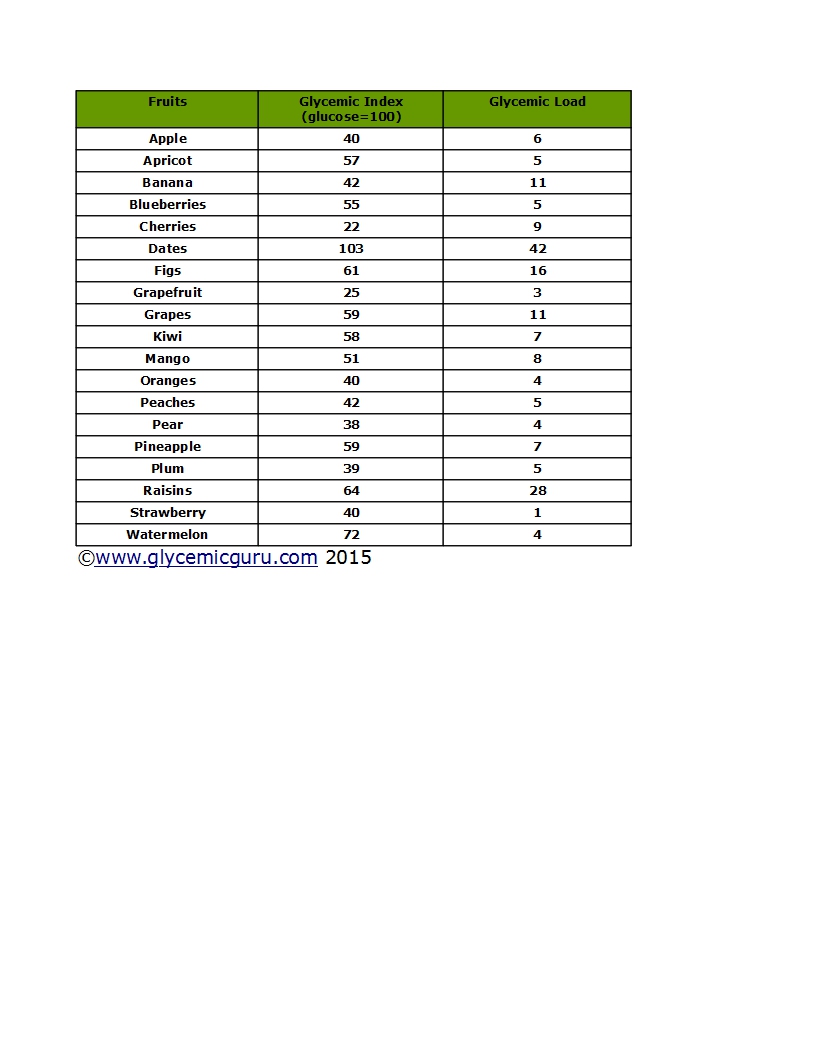Glycemic Index of Fruits
It's a well known fact that fruits are some of the most healthy carbohydrates available to us. Carbohydrates are our bodies' energy source, breaking down into sugar in our blood stream and providing fuel for our bodies. Fruits are full of vitamins, minerals, and antioxidants. Also, they are full of fiber that pairs well with fruits' natural sugars. Our bodies take longer to digest the fiber in the fruits thus delaying the sugar from entering the blood stream and causing it to spike up.
Every carbohydrate has a glycemic index. Glycemic index is a ranking of carbohydrates on a scale of 0-100 according to the extent they raise blood sugar level after consumption. Generally speaking, fruits tend to have low to medium glycemic index values (less than 69). They are “drippers” that slowly drip sugar into our blood stream, helping us to thrive. The few that have higher values (70-100), we call “flooders.” They tend to be easily digested, pushing glucose into our blood stream much faster than “drippers.” It's important to remember that glycemic index alone cannot tell us whether a type of fruit is good for us or not. The reason for that is that it does not take into account a typical portion size. Glycemic load does that much better.
Here
is a table with the glycemic index and glycemic load values for most
common fruits. The values are based on the research published in the
American Journal of Clinical Nutrition in 2002 (click here for full
version). Just a reminder that glycemic load values less than 11 are
considered low, 11-19 are medium, and greater than 20 are high.
Notice that watermelon has a glycemic index of 72 but when its
serving size is considered, watermelon's glycemic load falls in the
low category with a value of 4.
Glycemic Index of Fruits Table

Basics Facts about Fruits
Studies show that 60% of Americans don't eat enough fruit. Why is that? It's not easy to do. It takes intentionality to eat 2-3 cups of fruit which is the daily recommended serving. Here are a few quick tips for making fruit a steady fixture of your daily diet:
-have a piece of fruit with every meal and snack throughout the day
-remember that a typical serving size is equivalent to the size of
your fist
-stick to fresh or frozen fruits and stay away from canned fruit that
is loaded with sugar
-do not succumb to “made with real fruit” pastries; they typically
contain no fruit just lots of preservatives
-eat real fruit and not fruit juices or other processed products
Preparation of Fruits
Fresh fruit is the best! It's full of vitamins, minerals, and antioxidants that your body needs and craves every day. However, it is ok to cook with fruit provided you follow a few simple principles.
-the
less time fruit is exposed to heat, the less it loses its nutritional
value. Exposure to heat breaks down fruits' cell walls, leading to
water loss and lack of fruits' shape retention
-brief
cooking can quickly intensify fruits' flavor, particularly if its
slightly unripened
-fruits
tend to have lots of natural sugar in them – no need to add any
more while cooking them
-spices
(cinnamon, nutmeg, ginger) and herbs (mint, rosemary, sage) enhance
and intensify the flavor of fruits
-3 most healthy ways of cooking fruits are baking them, sauteing them, or grilling them

